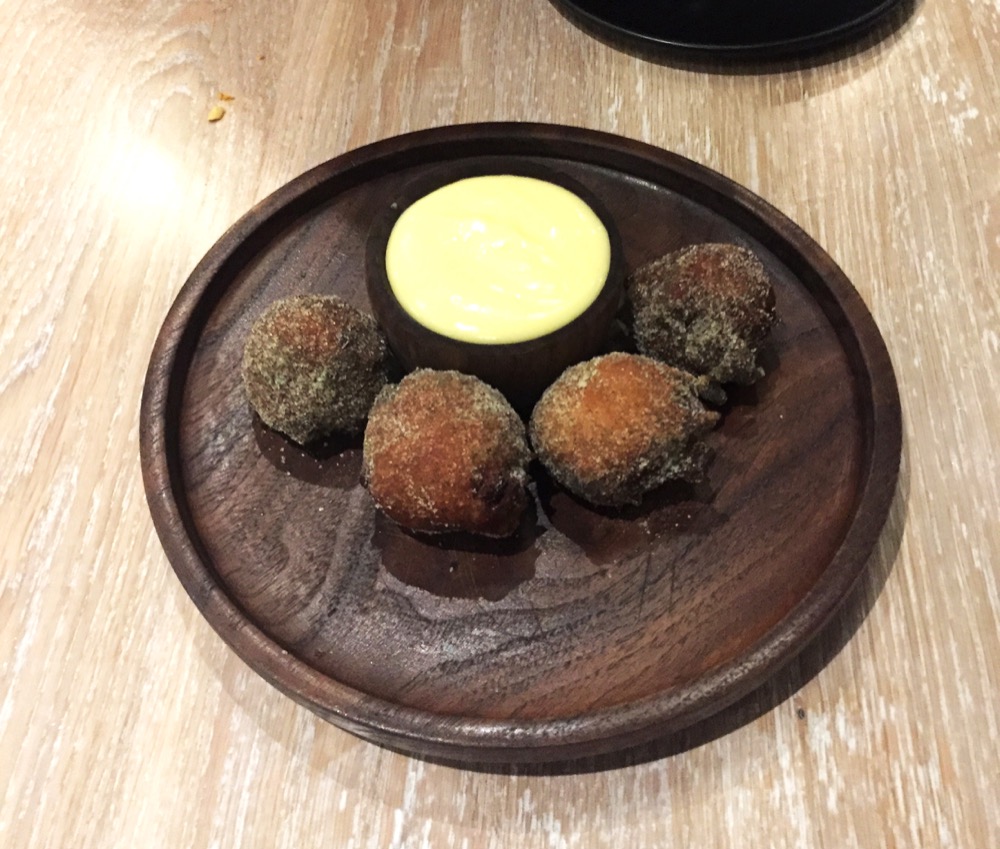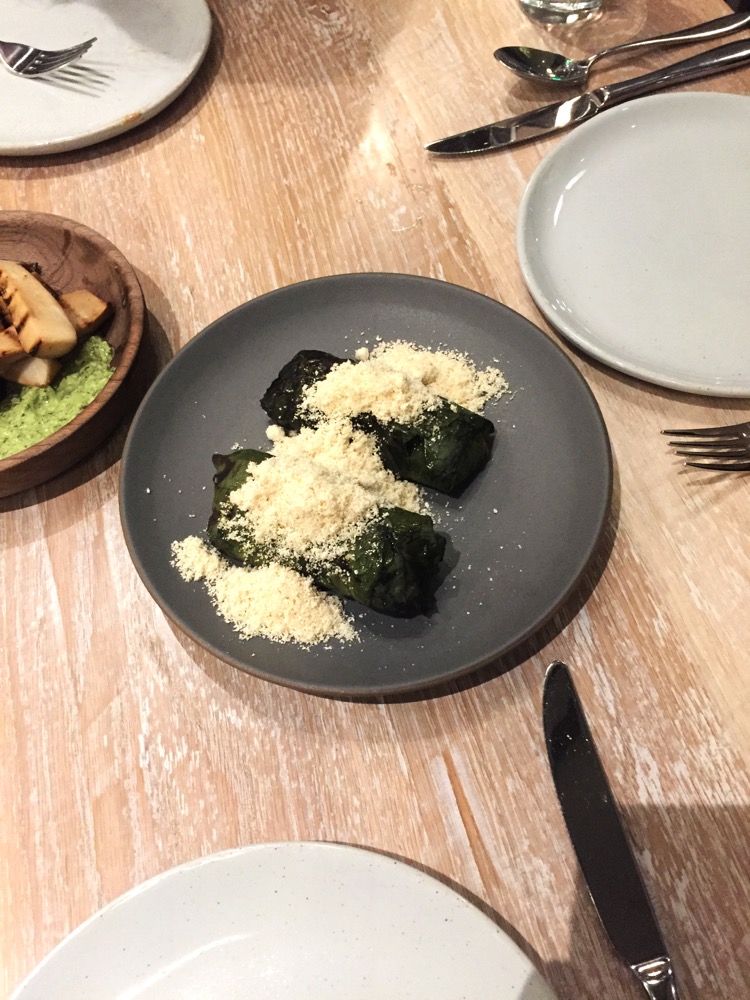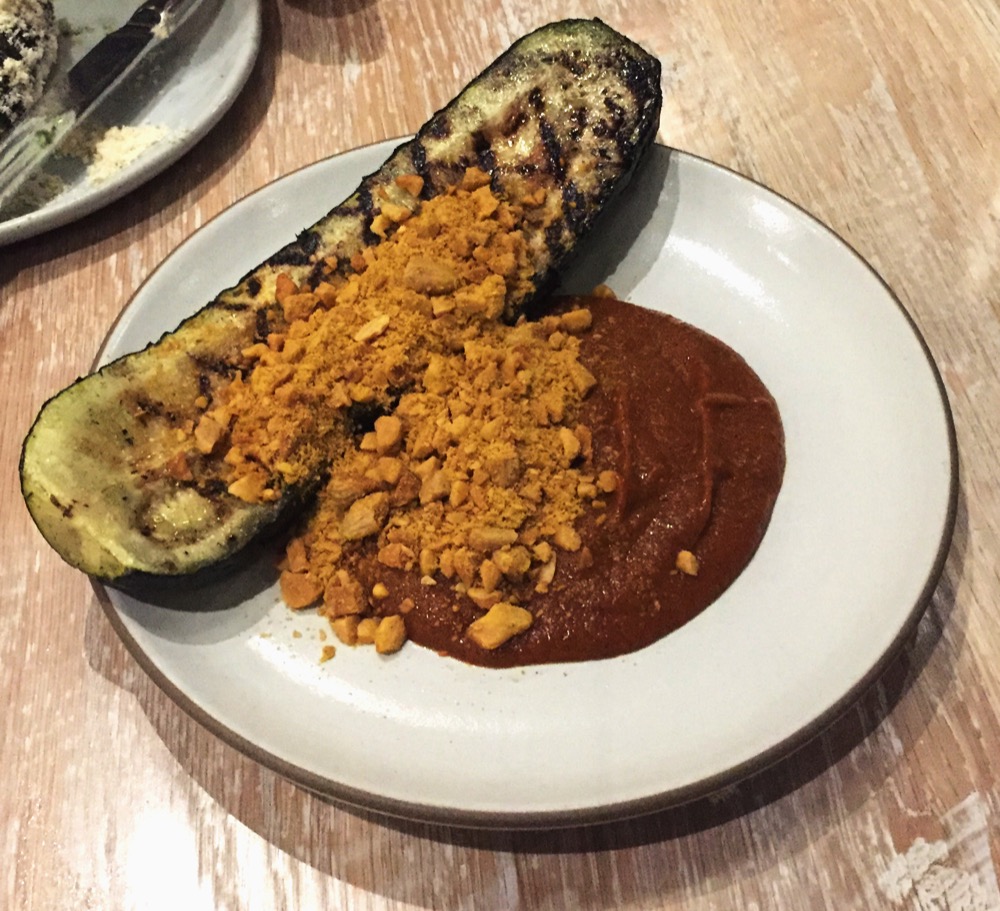Food | Scene
Farm-to-table dining at St. Louis restaurant Vicia
In his “Republic,” Plato argues that for every individual thing, there is the most perfect “form” of that thing, floating somewhere in the ether. For every apple, for example, there is the idea of the perfect apple—crisp, juicy, a glorious deep green and straight from the tree. This is the perfect apple, the apple that farmers hope all of their apples turn out to be. Whether or not the apple actually exists in real life is immaterial—it’s the idea of the apple that allows all other apples to be judged as relatively good or bad against it.
 Sam Seekings | Student Life
Sam Seekings | Student Life The reason I bring up and oversimplify one of philosophy’s most famous theories isn’t to explore some grand truth about the world, nor to show off how deep and wise I am (I took one intro philosophy class—you should probably check with an actual philosopher before taking anything I say on the subject seriously), but rather for two reasons. Firstly, the idea of the perfect form in relation to food is fascinating. I’ve described above what I think the perfect apple is, but perhaps you have a different idea. Perhaps you like your apple cut up into bite-sized pieces, perhaps you like it red. What accounts for these differences? How would such a flawless apple be farmed? Who should consume the immaculate apple? Should the apple be used in other dishes or eaten on its own? How can we ensure that the apple has been ethically sourced? This may all sound a bit silly—it’s just a damn apple, after all—but these are serious questions that the farm to table movement—a relatively new group in the world of high cuisine that broadly advocates for restaurants to use locally sourced, ethical ingredients—seeks to explore. The second reason I mention the theory of forms is that over the past few years, the Blue Hill at Stone Barns restaurant—where now co-owner and executive chef of Vicia, Michael Gallina, worked as the chef de cuisine from 2011 to 2015—has increasingly come to be seen as the perfect form, or as close as mere mortals can get to it, of a restaurant by followers of this movement.
Vicia is not Blue Hill at Stone Barns, and it is perhaps unfair to compare the two. The latter restaurant, located in Pocantico Hills, N.Y., has a Michelin star, and was named number 11 on the influential World’s 50 Best Restaurants List this past year. It also costs $258 per person, and that’s before tax, beverages and tip. Vicia, perhaps to its credit, is not a set fifteen-course edible art display for big-city millionaires. It can be found just past the Medical Center on the other side of Forest Park, far away from the established culinary metropolis of New York City. It does cost what almost any college student would consider a pretty penny—two family style entrees are recommended per diner, each one costing between 10 and 18 dollars, and for the especially decadent there is an $85 dollar tasting menu—but a nice date night here isn’t entirely out of reach for those yet to make their fortune. I went on a normal Tuesday night, and there were multiple other 20- or 30-somethings enjoying their meal along with the expected array of middle-aged businessmen and their associates.
Nonetheless, it’s undeniable that the farm-to-table values and ideas that Blue Hill epitomizes are found at Vicia, transplanted to the Midwest and used to create the same “as it should be” food that put Gallina on the map. Vicia stays true to the Midwest and to Gallina’s birthplace in St. Louis, while also thinking forward on what fine dining should be.
 Sam Seekings | Student Life
Sam Seekings | Student Life This connection between innovation and the community is manifested physically in the restaurant, as a large segment of the dining area is semi-exposed to the elements, with the rest surrounded by glass paneling. Walking into Vicia feels like attending a bonfire—with cheerful conversation and a crackling open fire on one of the only solid walls that welcomes diners—right up until the point where one sits down to find a tablecloth and silverware and suddenly remembers where they are.
The wait staff are knowledgeable and attentive, explaining the menu’s concept and taking special care to enquire if any in the party are vegetarians, which is an appreciated touch. Vicia is not a vegetarian restaurant, and a few dishes are meat-based, but it does describe itself as celebrating “vegetable-forward cuisine” on its website, and clearly cares deeply about customers eating an ethical and healthy meal, however they may define that.
Starters are served for the whole table to share, and my party ordered the Maine Peekytoe Crab Salad with charred garlic aioli squash blossoms. Our first taste of the restaurant made it clear how the meal would go—the salad was slightly acidic, light, refreshing and delicious. One of my companions would later comment as we left that it was the first meal they could say they were totally satisfied with, and yet did not walk away from entirely stuffed. I couldn’t agree more.
Entrees at Vicia are also served family-style, each one coming out as it is ready, and the wait staff actively recommends approximately two dishes per person. The first entree to arrive were the grilled king trumpet mushrooms with a squash blossom pesto. The mushrooms were prepared as well as would be expected for an establishment with Vicia’s hype (and price), but it was the pesto that shined through, complementing the mushrooms’ savory delight.
The grilled zucchini steak was probably the most disappointing dish we tried. The zucchini itself was only lightly seasoned, placing emphasis on the curried almonds and romesco sauce that came with it. While both of these elements were fine on their own, their interaction with the zucchini and each other, although not quite unpleasant, left something to be desired. The slight letdown of the zucchini, however, was entirely made up for by our next dish—Missouri Wheat Berries with a medley of vegetables.
 Sam Seekings | Student Life
Sam Seekings | Student Life Returning to Plato’s theory, this dish was easily closest to the perfect form of a Vicia dish of any we tried. It was simple—basically just a bunch of grains and vegetables in a bowl with a light sauce—but the sheer purity and sourcing of the ingredients, combined with expert preparation, turned it into an incredible taste experience.
Our final entree was the swiss chard tamales filled with a creamy polenta. The swiss chard was, as you might expect by this point, maximized as an ingredient, but the polenta was the true star of the dish: smooth, creamy and delectable. We finished our meal off with Peach fritters for dessert. These slightly larger than bite-sized balls were light, fluffy and, yet, somehow, exceedingly decadent. Don’t skip dessert here.
We left Vicia, as my companion said, fully satisfied without feeling overly full. It was not the best meal I have ever eaten. Instead, what was quite clear was that this is a restaurant run by a chef who cares not only about making food delicious but about making it responsible and authentic too. It was interesting and honest in a way that few meals are, and I will certainly be returning in future. Even if Vicia isn’t the perfect form of a farm to table restaurant, it can certainly be judged as excellent against that elusive idea—and having such a restaurant in St. Louis gives diners here an exciting and different option.
